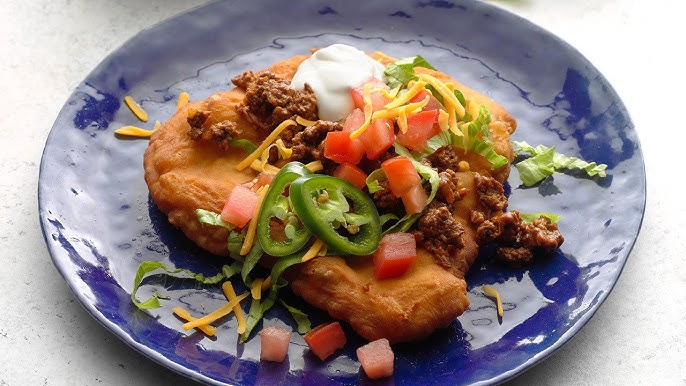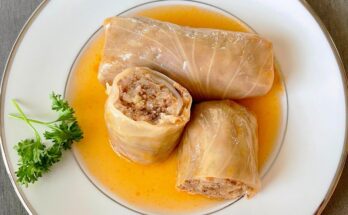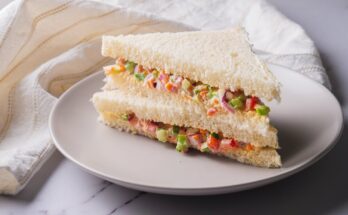Fry Bread Recipe: Fry bread is more than just a tasty treat; it’s a symbol of tradition and community for many cultures, especially Native American tribes. With its crispy exterior and soft, chewy interior, fry bread is versatile, comforting, and surprisingly easy to make. Whether enjoyed as a sweet dessert or paired with savory dishes, this simple bread is a staple worth mastering.
What Is Fry Bread?
At its core, fry bread is a type of flatbread that is fried instead of baked. Originating as a necessity during times of hardship, fry bread has evolved into a cherished dish. While basic versions use flour, water, and salt, you’ll find variations that include baking powder, sugar, or even milk to enhance flavor and texture. It’s a blank canvas, perfect for sweet or savory toppings.
Ingredients for Fry Bread
Here’s what you’ll need:
- 2 cups of all-purpose flour
- 1 tablespoon baking powder
- 1 teaspoon salt
- ¾ cup of warm water or milk
- Vegetable oil (for frying)
Optional ingredients:
- 1 tablespoon sugar for a sweeter dough
- A pinch of cinnamon for added flavor
These simple ingredients make fry bread accessible and adaptable.
Kitchen Tools You’ll Need
To make fry bread, gather these essentials:
- A large mixing bowl
- Measuring cups and spoons
- Rolling pin (optional)
- Deep frying pan or pot
- Slotted spoon
- Paper towels for draining oil
Optional but helpful tools include a kitchen thermometer to monitor oil temperature and a pastry cutter for consistent dough portions.
How to Prepare the Dough
- Mix the dry ingredients: In a large mixing bowl, combine the flour, baking powder, and salt. Stir well to evenly distribute the leavening agent.
- Add the liquid: Gradually pour in warm water or milk while mixing with a fork or your hands. The liquid should bring the dough together without making it sticky.
- Knead gently: On a floured surface, knead the dough for about 2-3 minutes until it’s smooth and elastic. Avoid overworking, as it can make the bread tough.
The goal is a dough that’s soft, pliable, and easy to handle.
Resting the Dough
Resting the dough allows the gluten to relax, resulting in a more tender fry bread. Cover the dough with a damp cloth or plastic wrap and let it sit for 30-60 minutes. This step is essential for achieving the perfect texture.
Shaping the Fry Bread
Once rested, divide the dough into 6-8 equal portions. Roll or flatten each piece into a disc, about 6-8 inches in diameter. Don’t stress about perfection—rustic shapes add to the charm! Poke a small hole in the center of each disc to prevent puffing during frying.
Heating the Oil
Choose a neutral oil like vegetable or canola. Pour enough into a deep frying pan or pot to reach about 2 inches deep. Heat to 350°F (175°C) using a kitchen thermometer to ensure accuracy. Maintaining the right temperature is crucial for even frying.
Frying the Bread
- Gently lower a piece of dough into the hot oil.
- Fry for about 1-2 minutes per side, or until golden brown.
- Use a slotted spoon to flip the bread and remove it when done.
Work in small batches to avoid crowding the pan, which can lower the oil temperature.
Draining Excess Oil
Place the fried bread on a plate lined with paper towels to absorb excess oil. This keeps the bread crisp and light, ready for toppings or immediate serving.
Serving Suggestions
Get creative with your fry bread toppings! Here are some ideas:
- Savory: Top with taco fillings, shredded cheese, and salsa for a fry bread taco.
- Sweet: Sprinkle with powdered sugar, drizzle with honey, or spread with jam for a delightful dessert.
The possibilities are endless, making fry bread perfect for any meal or occasion.
Storing Fry Bread
If you have leftovers (unlikely!), store them in an airtight container at room temperature for up to two days. To reheat, wrap in foil and warm in the oven or microwave for a few seconds.
Common Mistakes to Avoid
- Overkneading the dough: This leads to tough bread. Knead just enough to combine the ingredients.
- Using oil that’s too hot or cold: Too hot, and the bread burns; too cold, and it absorbs excess oil.
- Skipping the resting step: Resting is key to tender, fluffy fry bread.
Variations on Fry Bread
Experiment with regional or personal twists:
- Use whole wheat or almond flour for a healthier take.
- Add herbs or spices for a savory kick.
- Try a stuffed version by folding fillings into the dough before frying.
FAQs about Fry Bread Recipe
What is fry bread?
Fry bread is a flat dough bread, fried or deep-fried in oil, shortening, or lard. Made with simple ingredients like flour, water, and salt, it has roots in Native American cultures and is both a symbol of resilience and celebration.
How do I make fry bread?
To make fry bread, combine 2 cups of all-purpose flour, 1/2 teaspoon of salt, and 2 teaspoons of baking powder in a mixing bowl. Gradually stir in about 1 cup of warm water to form a dough. Knead the dough until it’s smooth, then let it rest for 20 minutes. Break off pieces, shape into discs, and fry in hot oil until golden brown on both sides.
What variations can I add to my fry bread recipe?
Fry bread can be versatile. For savory options, add herbs like rosemary or garlic powder to the dough. For a sweet variant, sprinkle powdered sugar or cinnamon on top after frying. Some recipes even include dried fruits or nuts in the dough.
Is fry bread healthy?
Fry bread is high in calories and fats due to frying. It can be enjoyed occasionally as part of a balanced diet, but it’s best consumed in moderation, especially by individuals monitoring their intake of fats or carbohydrates.
Can fry bread be made ahead of time?
Fry bread is best enjoyed fresh and hot right after frying. However, you can prepare the dough ahead of time and store it covered in the refrigerator for a few hours before you plan to fry and serve it.
Conclusion
Fry bread is a timeless dish that’s both simple and deeply satisfying. Whether you’re exploring its cultural roots or just whipping up a delicious snack, this recipe offers endless opportunities for creativity. Now, it’s your turn to try this golden delight!



